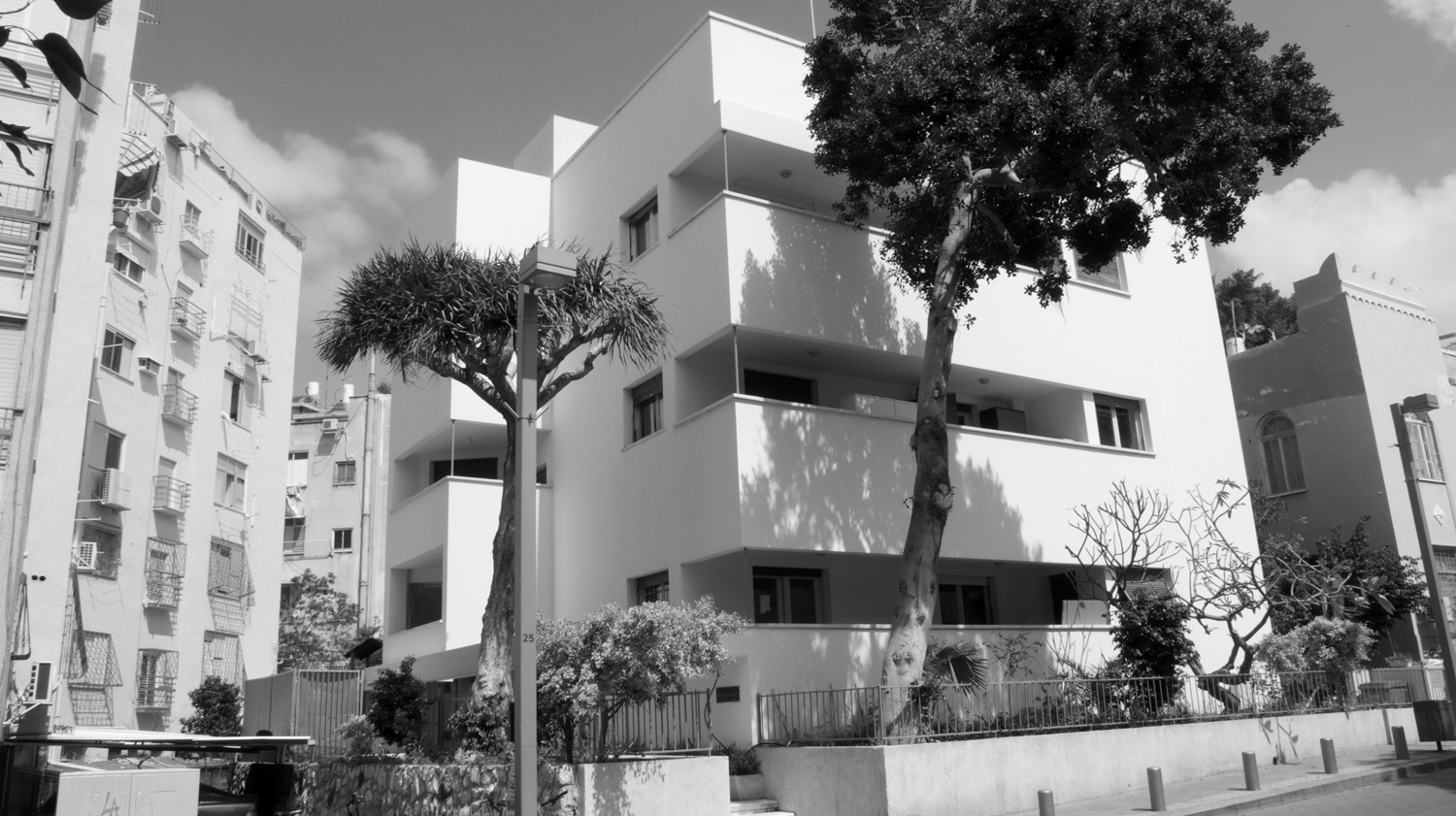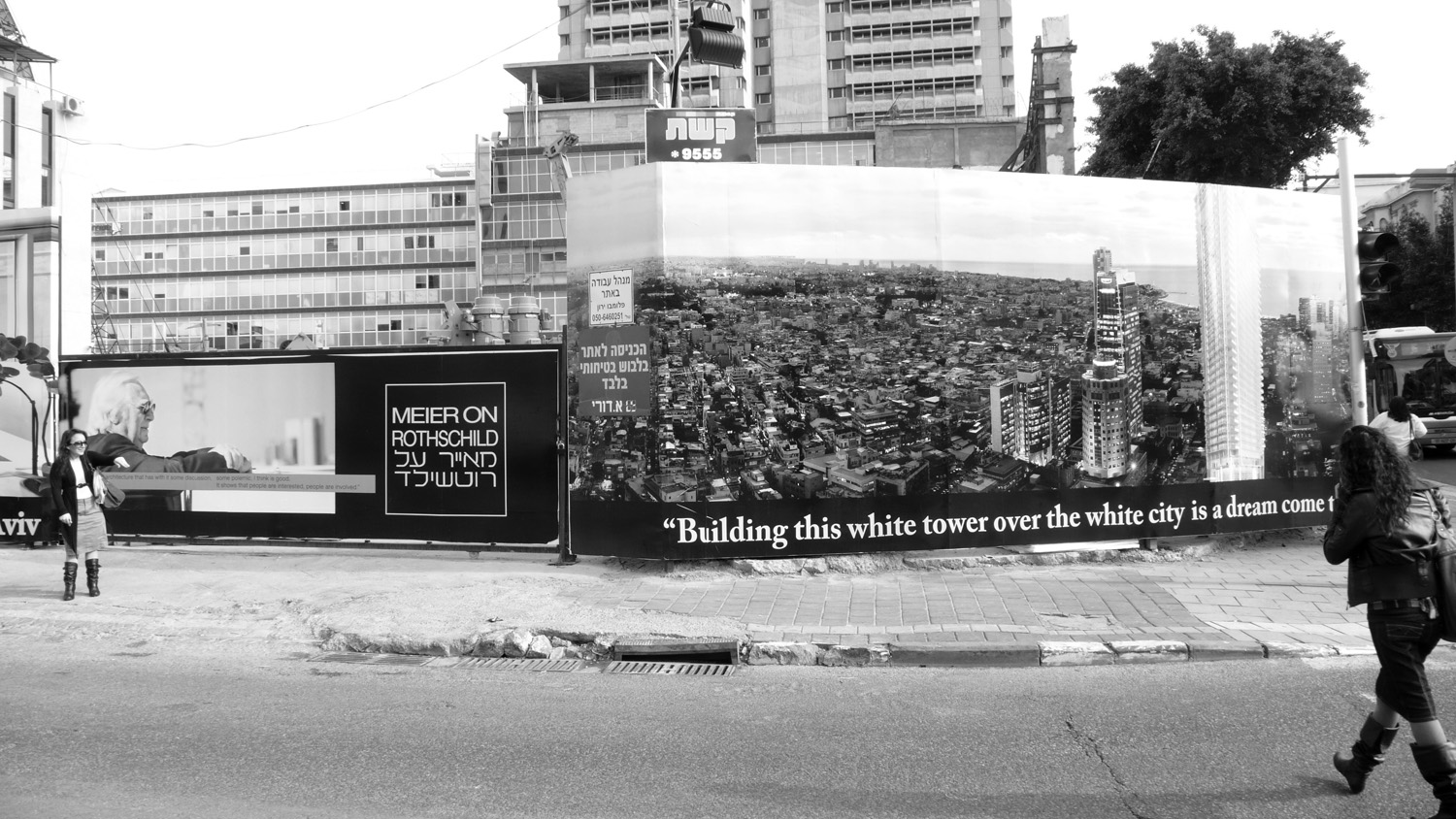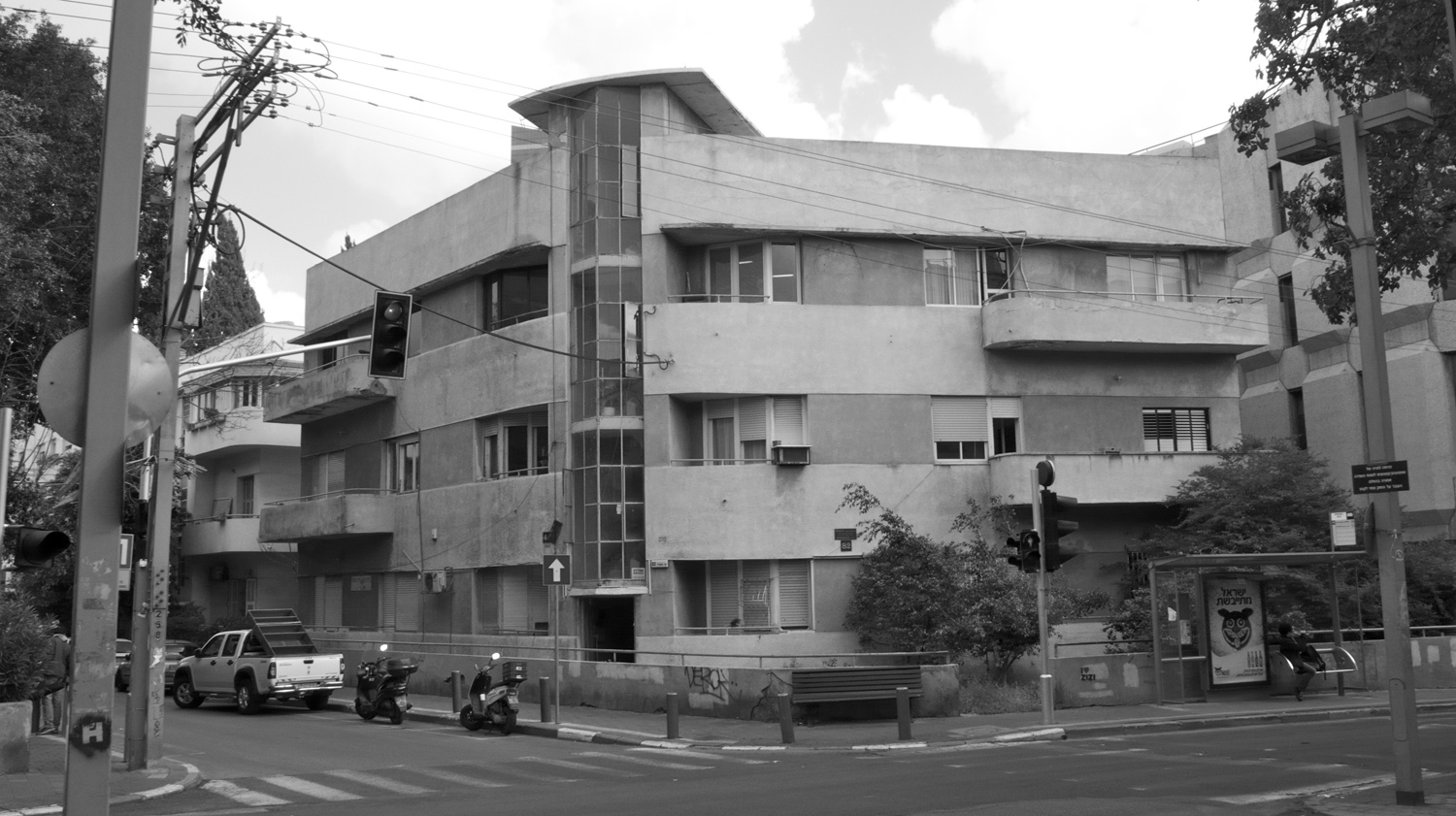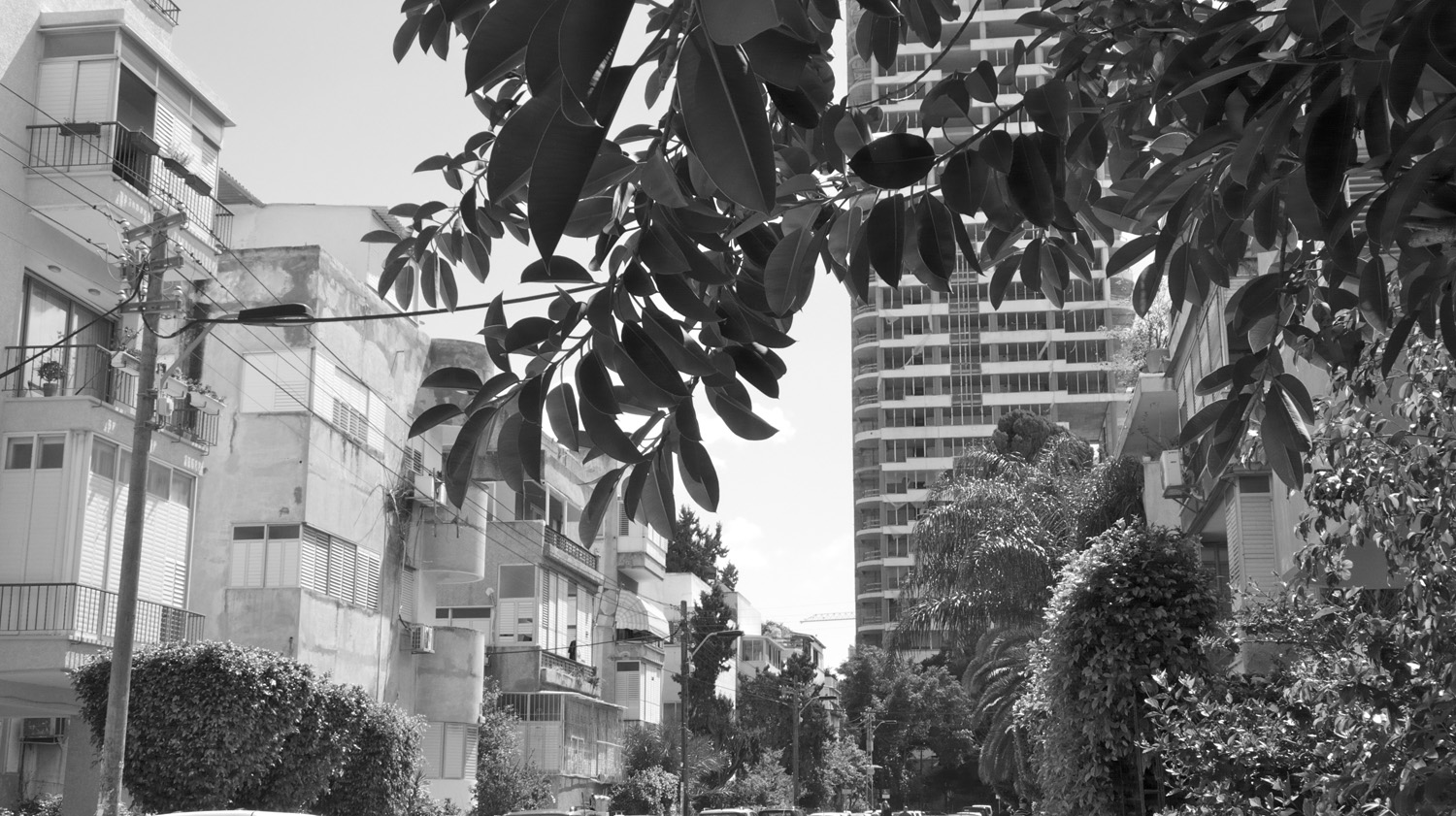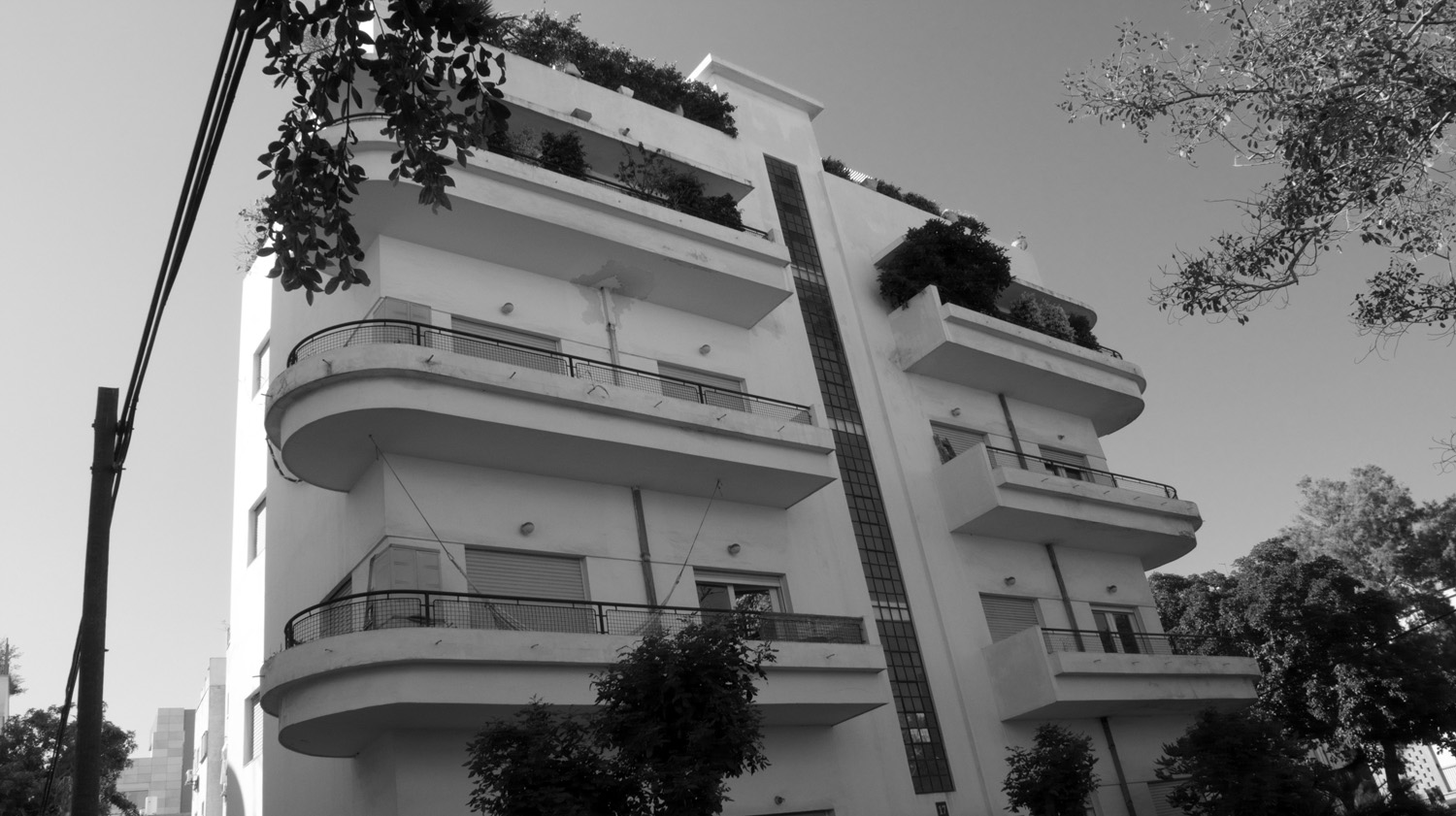Perspective - The White City by Susan Horowitz
The trajectory of my interest in examining the modernist architecture of Tel Aviv springs from the photographic project URBAN FLUX which began as a study of L.A. architecture and urbanization and continues internationally with many cities. The presence of an extraordinary trove of modernist buildings, one of the great results of the “Bauhaus diaspora,” which amazingly had only fairly recently been appreciated within the country or recognized internationally, led me to see it and explore the history. It represents a compelling, complex urban architectural story.
“ Both “Tel Aviv constructed” and “Tel Aviv imagined” were shaped during the decades when international modernism flourished, as both a powerful architectural vision and a cluster of aesthetic movements.An urban center created wholly from scratch, the city embodied the ideals and contradictions of the paradigmatic modernist architects such as Le Corbusier. Literary modernism’s valorization of exile and newness found its most problematic treatment in the representation of Jewish urban space in Tel Aviv.”
-Barbara Mann, A Place In History -Modernism, Tel Aviv and the Creation of Jewish Space
The White City, composed of densely built urban blocks of buildings, most vitally occupied, many shockingly decayed, some abandoned, form neighborhoods lushly masked by trees and bushes in streets lined with cars. The relentlessly sunny, hot climate, glaring light, beach orientation, strikingly evoke aspects of L.A., another modern city in the early stages of recognizing the elements of its architectural heritage. Overwhelmed at the sight of block after block of iconic patterns of modernist architectural elements, I explored viewpoints:
“The legacy of the Bauhaus has been shaped by the tides of the twentieth century itself. After the school’s forced closing in 1933, many of its faculty and students left Germany for the Americas, Mandate Palestine, South Africa and elsewhere, and through diaspora, varied understandings of the Bauhaus proliferated.” - Barry Bergdoll + Leah Dickerman, Bauhaus- Workshops For Modernity
“I am convinced that architecture in Palestine should not be limited solely to the discovery of some kind of formula; rather one should seek the basic elements leading to architecture which is not only functional but also in keeping with the spirit of the time and of history.” -Le Corbusier
“Tel Aviv in the thirties was the first city in the world to be constructed almost entirely in the International Style. Aerial photographs of Tel Aviv clearly depict the white cubes which comprised the typical urban fabric. Only a few of these buildings reached the level of the exemplary structures erected several years earlier in Europe, yet no other city could boast a mosaic of houses of similar size and forms, virtually all of which were built in the International Style.” -Michael Levin, The White City
“Modernism in Eretz-Israel is undoubtedly significant in terms of architectural history for the formal wealth of the Modern architectural language derived from endless variations on a few basic elements, and the solutions of new building problems...Tel Aviv can teach us that modern architecture does not have to lead to the banality and uniformity that desolated great swathes of Europe in the post-war building boom. Gropius’s dream of unity in diversity as a basis for urban quality is realized in the Tel Aviv of the 30’s.”
-Winfried Nerdinger The Architecture of Hope Tel Aviv Modern Architecture 1930-39
“I still love Tel Aviv, but in the 1950’s it was sensational- utopian and poetic. The country was not even ten years old when we arrived, and everything was brand-new: crisp, white modern. The Bauhaus buildings erected all over the city have now mellowed with age, and I don’t know how they look inside, but they were glorious back then. How ironic that this movement, which really never worked in Germany, where it started, would find its true place in Israel. Here, the cornerstones of the Bauhaus philosophy - a spirit of collectivity, a social ideal of egalitarianism, a commitment to the future- made perfect sense, and part of that philosophy involved making the world a beautiful place to live. These buildings were as beautiful and as inspiring as anyone could dream of.” - Daniel Libeskind , Breaking Ground - Adventures in Life and Architecture
The White City is a place where the irony of the architectural debate that questions the viability of landmark designations regarding restoration is understood as it faces economic and social problems while featuring a Bauhaus Center.
“We have a theory that since there is so much preservation we also need a philosophy or theory of what should disappear...The status of what the contemporary world produces in many cases does not deserve eternal life.” -Interview with Rem Koolhaus, Cronochaos Exhibit 2010 Venice Architecture Biennale
Returning to L.A., it is impossible to resist imagining a Bauhaus district on the scale of The White City here. Emigre architect Richard Neutra, with his close ties to the Bauhaus, and partner Rudolf Schindler, tried to realize a Hollywood project of modernist apartment buildings that resulted in only one prototype, The Jardinette 1927, that stands in the middle of California mediterranean architecture. This represents only one L.A. modernist plan of many that failed- yet another compelling perspective to marvel at the striking reality of The White City.
